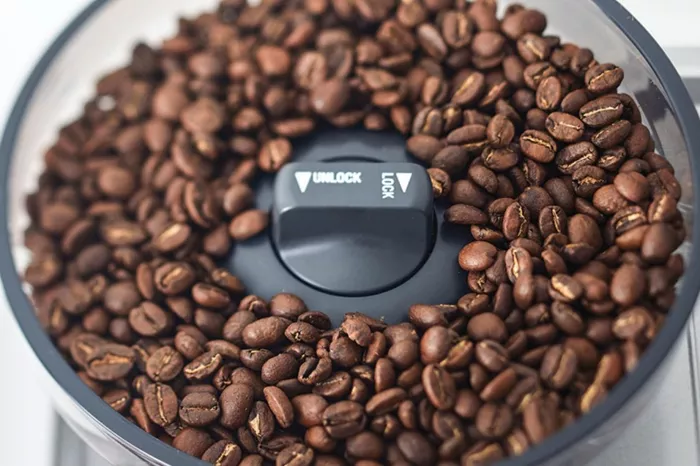If you’re a coffee lover, home barista, or café owner, you’ve probably asked yourself: how many espresso shots can I pull from a 1kg bag of coffee beans? It’s an important question, especially if you’re managing your budget or planning for your coffee consumption. In this guide, we’ll break it all down in simple terms.
Espresso is a concentrated coffee brewed by forcing hot water through finely-ground coffee. Each shot is small but strong, and the number of shots you can make from 1kg of beans depends on a few important factors like how much coffee you use per shot, your machine, and how efficient your brewing process is.
Let’s explore all these aspects in detail.
Standard Espresso Shot Size
The amount of ground coffee used for a single espresso shot can vary depending on tradition, machine, and taste preference. However, there are common standards:
Traditional Single Shot: Around 7 grams of ground coffee.
Modern Single Shot: Around 9 grams of ground coffee.
Double Shot (Doppio): Uses 14 to 18 grams, depending on barista preference and machine calibration.
These measurements are used globally, especially in cafés and competitions, and help maintain consistency in espresso flavor.
Estimated Number of Shots from 1kg of Coffee
To calculate how many espresso shots you can get from 1kg of whole coffee beans, we divide the total weight (1,000 grams) by the dose per shot:
Traditional espresso (7g per shot): 1,000 / 7 ≈ 142 shots
Modern espresso (9g per shot): 1,000 / 9 ≈ 111 shots
Double shots (14-18g per shot): 1,000 / 18 = 55 shots (minimum) and 1,000 / 14 = 71 shots (maximum)
So, from 1kg of coffee beans, you can expect:
Between 111 and 142 single shots, depending on your dosing style
Between 55 and 71 double shots, based on the gram amount used per shot
Factors That Affect Espresso Yield
While the numbers above give you a good estimate, real-world variables can change the total number of shots. Here are the main factors that impact your espresso yield:
1. Grind Size
Finer grinds can cause over-extraction if not properly managed, leading to waste. If your grind is too fine, it might require more coffee to get the right flow rate.
2. Extraction Method
Manual espresso machines and automatic machines vary in consistency. Professional machines might have better yield because they allow precise control over pressure and time.
3. Waste and Spillage
Some coffee is lost during grinding, tamping, or spilled during the process. Even a few grams a day can add up over time.
4. Purge and Retention
Most grinders retain some coffee grounds inside. Baristas also purge the grinder between doses to prevent stale grounds from affecting the next shot. This results in a small but consistent loss.
5. Calibration and Dialing In
When adjusting grind size and dose for flavor, you often waste coffee during the dial-in process. This is especially true for cafes trying new beans.
Taking all this into account, the actual number of espresso shots you can make from 1kg might be 5-10% less than the theoretical number.
Coffee-to-Water Ratio for Espresso
Another key part of espresso brewing is the coffee-to-water ratio. Most baristas use a 1:2 ratio, meaning:
- 1 part coffee grounds
- 2 parts brewed espresso
For example:
Using 18g of coffee: extract about 36g of espresso
Using 9g of coffee: extract about 18g of espresso
This ratio helps create a balanced shot with rich flavor and proper mouthfeel. Altering this ratio will affect not only taste but how many shots you can make per kilo.
Waste Considerations
Let’s take a closer look at how waste affects your total output.
Grinder retention: Some grinders retain 0.5g to 2g per grind.
Purge waste: Baristas may discard the first 2–3g when changing beans or making adjustments.
Tamping loss: Grounds might spill during tamping if not handled carefully.
Channeling and re-pulls: If a shot channels (extracts unevenly), it may be discarded.
Assume a 5% to 10% total loss. So if 1kg yields 142 shots (using 7g), a 10% waste reduces it to about 128 shots.
Cost & Consumption Insights
Knowing how many shots you get from 1kg helps you plan better for daily use and costs. Let’s break it down:
Daily Consumption
If you drink:
1 shot per day: 1kg lasts 3.5 to 4.5 months
2 shots per day: 1kg lasts 1.5 to 2.2 months
4 shots per day: 1kg lasts 28 to 35 days
Cost Per Shot
If 1kg of beans costs $25:
142 shots: ~$0.18 per shot
111 shots: ~$0.23 per shot
55 shots (double): ~$0.45 per shot
This makes homemade espresso highly cost-effective compared to buying from a café, where a shot may cost $2–$3.
Conclusion
A 1kg bag of coffee beans can yield anywhere from 111 to 142 single espresso shots, or 55 to 71 double shots, depending on how you brew. Realistically, after accounting for grinder waste and human error, expect slightly fewer.
Understanding espresso dose sizes, machine efficiency, and the coffee-to-water ratio will help you maximize your beans and minimize waste. Whether you’re brewing at home or in a coffee shop, this knowledge helps stretch your budget and deliver consistently great espresso.
Next time you pick up a fresh bag of beans, you’ll know just how far it can take you – one bold shot at a time.
Related topics:
- Why 3 Coffee Beans in Sambuca?
- How Many Espresso Shots Can You Get from 1kg of Coffee Beans?
- What Espresso Does Starbucks Use in Lattes?


